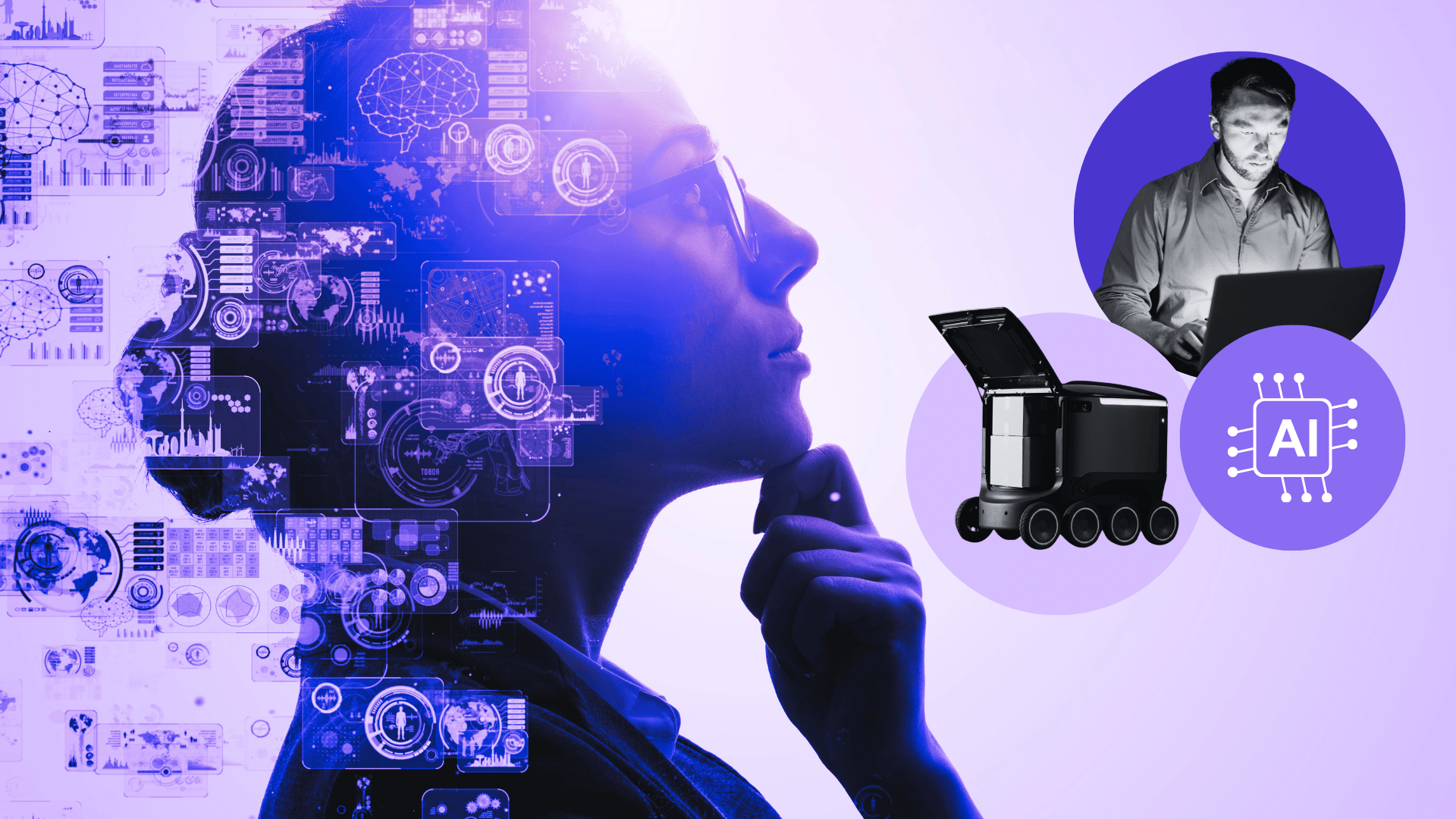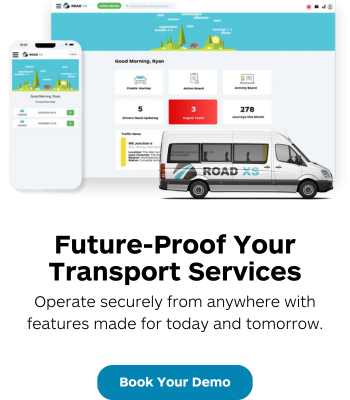Artificial Intelligence (AI) is transforming the transport sector at an unprecedented pace. Transport AI From route optimisation to predictive maintenance, reducing carbon emissions, to handling routine tasks, AI-driven systems make mobility smarter, safer, and more efficient. It is quite simply a brilliant tool.
Yet, as with any technological revolution, there is a darker side.
The same AI that enhances efficiency also poses significant risks, particularly around data privacy, security, and unintended consequences of automation. There’s also the fear of the lack of human involvement and the risk of AI models “hallucinating”.
The allure of AI lies in its ability to process vast amounts of data at incredible speeds. Its development curve is rapid.
For the transportation sector, this means predicting traffic patterns, completing complex tasks, optimising fleet management, self-driving vehicles, and more.
But as AI models continue to learn and evolve, a crucial question emerges: who owns the knowledge they accumulate, and what happens to the data we feed them?

The False Sense of Security in AI Data Processing
One of the biggest misconceptions about AI is the idea that “we do not store your data; we only process it.”
This common phrasing, used by many AI providers, can be misleading. While it suggests that your data vanishes after processing, AI models often retain learnings from the data they analyse.
Imagine uploading sensitive financial records to an AI system to help interpret spending patterns or perform financial tasks. The AI doesn’t “store” your files per se, but it learns from them.
Over time, this information may influence future responses, and—depending on the platform’s policies—fragments of that knowledge could become accessible to others. For example, other AI users could learn about your financial position, access intellectual property rights, or exploit known vulnerabilities that the AI model has identified.
It’s a bit like locking the doors but leaving the windows open.
In essence, once private, your data becomes part of the broader intelligence of the model.
The implications for the transport industry and transport logistics are concerning.
AI-powered systems handle vast amounts of passenger and driver data, from journey histories to payment details. Personal and corporate-sensitive data could be inadvertently exposed or exploited without stringent controls.
The Data Dilemma: We’re Too Quick to Give It Away

As a society, we have become remarkably comfortable sharing our data—often for free.
Social media has conditioned us to update the world on our locations, preferences, and even daily routines. The same passive attitude is creeping into AI-powered transport solutions.
Journey-hailing apps, “smart city” initiatives, and connected vehicle technologies all rely on continuous data streams. The more data we provide, the better these systems function.
But at what cost?
Few users stop to consider where their information is going, who has access to it, and how it might be repurposed.
Take, for example, AI-driven route optimization. While AI can efficiently map the shortest route from point A to point B, it does little beyond that—because the physical geography and road infrastructure are fixed.
However, AI is mighty when analysing patterns in transport data. By studying millions of trips, it can identify congestion trends from congested roads, predict demand surges, and influence pricing strategies. It could also help improve passenger safety and reduce traffic accidents.
If this data is not anonymised correctly, it could be exploited by third parties—from advertisers to law enforcement agencies or, worse, cybercriminals.
AI in Transport: A Double-Edged Sword

Despite these risks, AI brings undeniable benefits to transport:
• Predictive Maintenance: AI helps transport operators anticipate mechanical failures, reducing downtime and improving efficiency.
• Traffic Flow Optimisation: Smart traffic systems that analyse real-time data and public roads to ease congestion and reduce emissions much faster and more efficiently than any human intelligence possibly could.
• Demand Forecasting: AI-driven analytics help public transport systems adjust schedules based on usage patterns, providing valuable insights and long-term transport planning efficiencies.
• Autonomous Vehicles: Self-driving technology powered by AI promises to revolutionise personal and commercial mobility.
Yet, these advancements come with trade-offs. The more data AI systems consume, the more they “know.” And unless strict safeguards are in place, this knowledge can be leveraged in ways we may not anticipate—or consent to.
This raises all sorts of ethical factors for any organisation.
Protecting Data in an AI-Driven World

So, how can we harness the power of AI in transport while mitigating the risks?
- Prioritise Data Anonymisation: Before feeding data into AI models, strip out personal identifiers. AI can analyse patterns without needing names, addresses, or financial details.
- Demand Transparency from AI Providers: Users should push for clearer policies on how AI models process and retain information. Vague terms like “we do not store your data” should be scrutinized.
- Control What You Share: We must be cautious about the data we provide, whether as individuals or businesses. Just because an AI tool asks for information doesn’t mean it needs it.
- Regulate AI Use in Transport: Governments and industry leaders must establish strict guidelines on AI-driven data collection, ensuring privacy and security remain top priorities.
Common Transport AI Questions

As with anything new, there are often a lot of questions about emerging technologies. Here we answer some of them which we’ve been asked recently:
Does Road XS use AI?
Currently, Road XS does not use AI in its core functionality. Instead, our software relies on proprietary algorithms to optimise journeys and power our demand-responsive transport technology.
Since a route from A to B is already geographically optimised, AI is not required for route planning. Our algorithms efficiently manage vehicle and fleet optimisation to ensure smooth operations.
That said, we have explored AI for data analysis and have conducted trials where personal data is removed. However, due to the sensitive nature of passenger and driver data, we remain cautious about fully integrating AI until we are confident it meets our strict privacy and security standards.
Protecting user data is a top priority, particularly given the vulnerable groups we support. We continue to evaluate AI’s potential while ensuring our commitment to data privacy remains uncompromised.
How is Transport AI Reshaping Mobility?
AI is transforming the transport industry by making it more efficient, safer, and sustainable. From autonomous vehicles to intelligent traffic management, AI-powered solutions are reshaping how people and goods move.
Here are the key ways AI is impacting transport today:
- Optimised Route Planning & Traffic Management
AI-powered navigation systems analyse real-time traffic data, weather conditions, and roadworks to provide the most efficient routes. This reduces congestion, travel time, and fuel consumption, benefiting passengers and logistics companies. - Autonomous & Semi-Autonomous Vehicles
Self-driving technology is advancing rapidly, with AI-powered vehicles already being tested and deployed for taxis, buses, and freight transport. These vehicles use AI to interpret their surroundings, improving safety and reducing human error-related accidents. - Smart Public Transport Systems
AI enhances public transport by predicting demand, optimising schedules, and improving passenger experience. AI-driven systems help operators adjust services in real-time to reduce overcrowding and delays. - Predictive Maintenance & Fleet Management
AI helps transport providers detect potential vehicle faults before they cause breakdowns. Predictive maintenance reduces downtime, improves safety, and lowers costs for public and private fleet operators. - Sustainability & Energy Efficiency
AI supports the transition to greener transport by optimising energy use in electric vehicles (EVs), improving battery management, and reducing emissions through efficient route planning and logistics. - AI in Logistics & Supply Chain Management
AI streamlines logistics by improving demand forecasting, automating warehouse operations, and optimising delivery routes. This enhances efficiency, reduces costs, and minimises environmental impact. - Enhanced Safety & Accident Prevention
AI-powered systems like driver assistance technologies can detect hazards, prevent collisions, and alert drivers to potential risks. AI is also used to monitor driver fatigue and ensure compliance with safety regulations. - Mobility-as-a-Service (MaaS)
AI enables seamless integration between different transport modes, allowing users to plan and pay for multimodal journeys (e.g., combining buses, trains, and journey-sharing services) through a single platform.
What transport services can AI be helpful in?
AI can be used in various transport services, including:
- Public Transport: Optimises schedules, predicts demand and reduces delays.
- Logistics & Freight: Improves route planning, demand forecasting, and warehouse automation.
- Journey-Sharing & Taxis: Enhances matching, pricing, and navigation for efficiency.
- Autonomous Vehicles: Powers self-driving cars, buses, and delivery robots.
- Traffic Management: Reduces congestion with real-time data analysis.
- Fleet Management: Enables predictive maintenance and fuel efficiency.
- Mobility-as-a-Service (MaaS): Integrates multiple transport modes into seamless journeys.
AI enhances efficiency, safety, and sustainability across all these services.
Key Thoughts

Transport AI can make transport systems faster, safer, and more efficient. But in our rush to embrace its capabilities, we risk handing over vast amounts of personal and sensitive data without fully understanding the consequences.
The transport sector—and society at large—must strike a balance between innovation and privacy.
AI is only as powerful as the data it is given. Suppose we are not careful about what we share. In that case, we may find ourselves in a world where our movements, habits, and even financial records are not just processed—but permanently embedded into AI models accessible to others.
As AI continues to evolve, the question is no longer what it can do but rather what it should be allowed to know.
- Consider how you use AI.
- What information has you processed in AI.
- Have you made sure names, addresses and financial information are cleaned from the raw data you are processing?
- Think about whether you’d be happy with anyone accessing the information you’re passing into the AI model.
- What are your organisation’s or company’s policies around the use of AI models?


